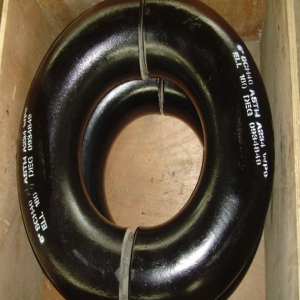What is the role of elbows in pipe connections?Posted by BAOWI STEEL MANUFACTURING CO.,LTD on April 22nd, 2024  Elbow(www.baowi-steel.com), as one of the pipe connectors, plays an important role in the engineering and manufacturing fields. It has a variety of functions and functions, including changing the direction of pipelines, connecting pipeline systems, adjusting pipeline layout, reducing fluid resistance, improving fluid transportation efficiency, etc. The function of the elbow will be introduced in detail below. 1. Change the direction of the pipe The most basic function of the elbow is to change the direction of the pipe. In piping systems, it is common to encounter situations where the direction of fluid flow needs to be changed, such as a horizontal pipe that needs to be turned into a vertical direction, or a pipe that needs to be laid out along a curved path. Elbows can effectively achieve this change in direction, making the pipeline system layout more flexible and reasonable. 2. Connect the piping system Elbows are used to connect different pipes or piping systems to form a continuous pipe line. Through different types of elbows (such as welded elbows, threaded elbows, flange elbows, etc.), pipes can be quickly connected and disassembled to facilitate maintenance and repair work. 3. Adjust pipeline layout Elbows can be used to adjust piping layouts, making piping systems more compact and efficient in limited spaces. By selecting elbows with different angles and radii, the pipeline can be converted between horizontal, vertical and diagonal layouts to meet the needs of different scenarios. 4. Reduce fluid resistance Proper use of elbows can reduce the resistance of fluid in the pipeline. During the fluid transmission process, the resistance generated when the fluid passes through a straight pipe is relatively large, but when it passes through an elbow, a part of the resistance will be reduced, thereby reducing energy loss and improving fluid transportation efficiency. 5. Adjust flow Elbows can also be used to regulate the flow and speed of fluids. By changing the radius of curvature, angle and shape of the elbow, the flow rate and flow rate of the fluid flowing through the elbow can be changed, thereby achieving regulation and control of the fluid. 6. Diversion and confluence In complex piping systems, elbows can also be used for branching and merging operations. By designing appropriate elbow layouts and angles, fluids can be diverted to different pipes or flow from multiple pipes can be merged to achieve control and management of complex fluid flow directions. 7. Relieve pipeline stress Elbows serve as stress relievers in piping systems. When the pipeline system is affected by factors such as external vibration, pressure or temperature changes, the elbow can absorb part of the stress through flexible connection, reduce the impact on the pipeline system, and improve the stability and safety of the system. 8. Sound wave absorption Some specially designed elbows can also be used to absorb sound waves and vibrations generated during fluid transmission, reduce noise and vibration levels, and improve the working environment and comfort of the pipeline system. Generally speaking, as an important part of pipeline connectors, elbows have a variety of functions and functions, including changing pipeline direction, connecting pipeline systems, adjusting pipeline layout, reducing fluid resistance, regulating flow, dividing and converging, stress relief and sound wave absorption. wait. When designing and using pipeline systems, reasonable selection and application of elbows can effectively improve the operating efficiency and safety of the pipeline system. To learn more, please visit the website: Like it? Share it!More by this author |


